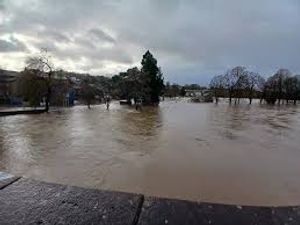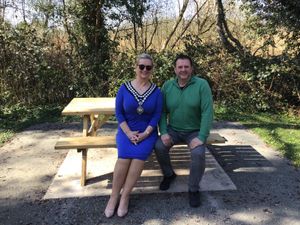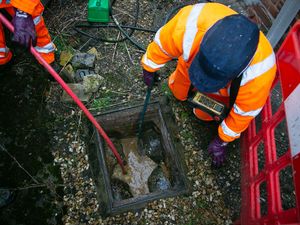River pollution concerns raised over south Shropshire housing developments
A bid to build future homes in part of South Shropshire will be opposed by the Natural England until measures to tackle river pollution are resolved.

The situation concerns Shropshire Council's plans for development in the River Clun catchment as part of its 'local plan' proposals.
The local plan set out where the council wants homes and commercial developments to be built in the county up until 2038. The plan is currently being assessed by planning inspectors who will decide whether it is acceptable or not.
The council's current proposals for the River Clun catchment raised objections from Natural England and the Environment Agency.
The concern comes because the River Clun Special Area of Conservation (SAC) is "so far above its water quality targets" that adding houses in the area could make the problem worse.
Special areas of conservation are amongst the most important and sensitive sites in the UK and are afforded the highest level of legal protection.
Although the River Clun is important for wildlife such as otter, salmon and trout, the reason for its protected status is the presence of the extremely rare freshwater pearl mussel.
Natural England wants a 'restoration plan' in place for the river before housing development can take place.
In a letter to Shropshire Council Natural England suggested that the council could propose building more homes in Bishop's Castle instead of the rest of the River Clun catchment – due to plans from Severn Trent.
Natural England said the water company intends to empty wastewater from its Bishop's Castle treatment works to 'an alternative watercourse, outside the Clun catchment area'.
The plan is intended to come into force by 2028.
The letter from Emma Johnson, deputy director of Natural England's West Midlands area team, states that the measure would mean houses could be built in the Bishop's Castle area without requiring 'nutrient neutrality' – a rule that requires new homes in specific areas do not add nutrient pollution to the water catchment.
She said: "If this scheme goes ahead, then new housing developments with a mains drainage connection to the Bishop’s Castle treatment works would have no impacts on the River Clun SAC (in terms of foul drainage only).
"These developments would therefore not require nutrient neutrality. In Natural England’s opinion this remains the most viable option to progress development while avoiding impacts on the River Clun SAC.
"Shropshire Council’s submission draft Local Plan proposes 93 houses in Bishop’s Castle. If the proposed transfer scheme comes about then Shropshire Council may want to consider allocating additional development in Bishop’s Castle.
"This would reduce the number of homes that need to be built elsewhere in the catchment.
"Reducing the number of homes that need to be built elsewhere in the catchment has the effect of reducing the total quantity of nutrient neutrality needed. This then reduces the risk of nutrient neutrality undermining site restoration."
In the letter Ms Johnson says that the concerns over the state of the river mean they are still opposed to any development in the catchment outside Bishop's Castle.
She said: "As the River Clun SAC is so far above its water quality targets, we think that all measures need to be in consideration for restoration.
"The restoration blueprint must be written first. We will then be able to identify measures that are no needed for restoration, and therefore available for nutrient neutrality. Therefore regrettably, our position on this remains unchanged."
Responding to the letter Shropshire Council's planning policy and strategy manager, Eddie West, says the authority "recognises the considerable opportunity" of the Bishop's Castle project, and will talk with Severn Trent on the scheme.
Mr West also says that modifications proposed for the local plan which would "only allow development to occur within the Clun Catchment where it achieves at least nutrient neutrality" – a position he says is consistent with the opinion of Natural England.
He adds that the homes proposed for the catchment, are for the "latter" period of the plan – around 2035, allowing "sufficient time for Natural England to prepare the ‘Blueprint’ for restoration of the River Clun SAC."





